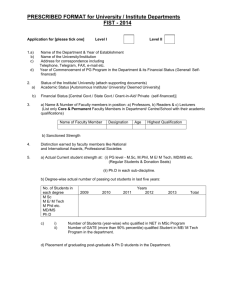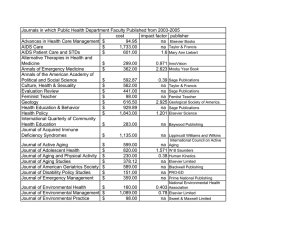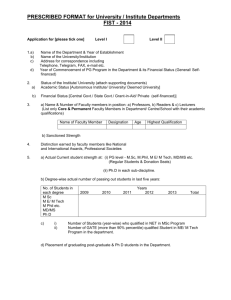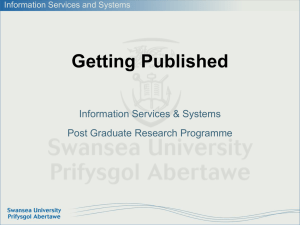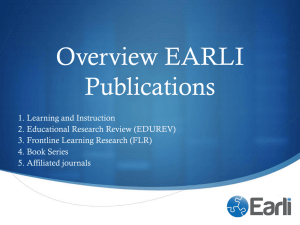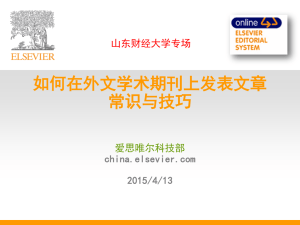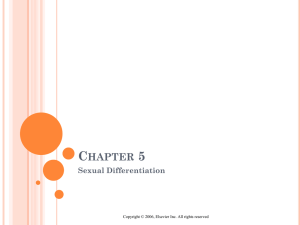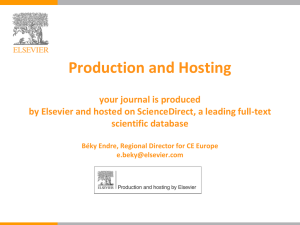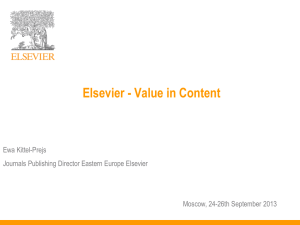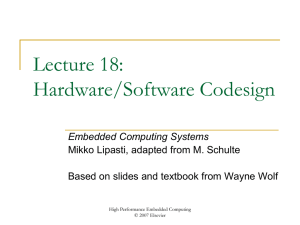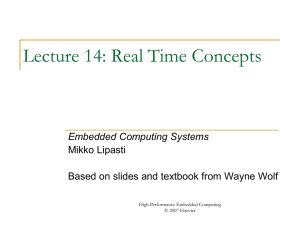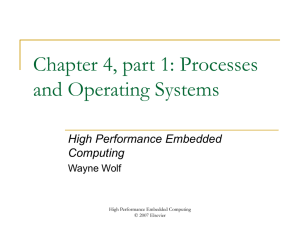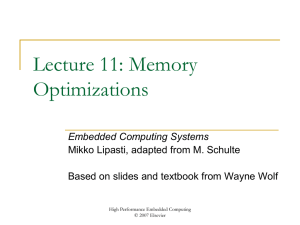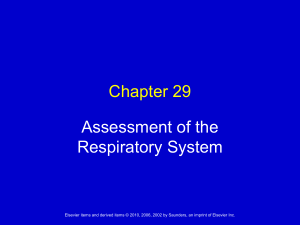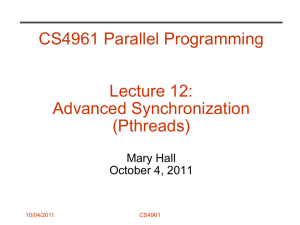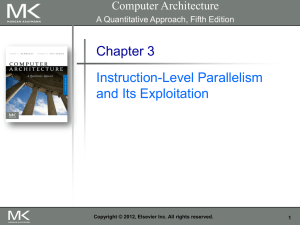Presentation
advertisement
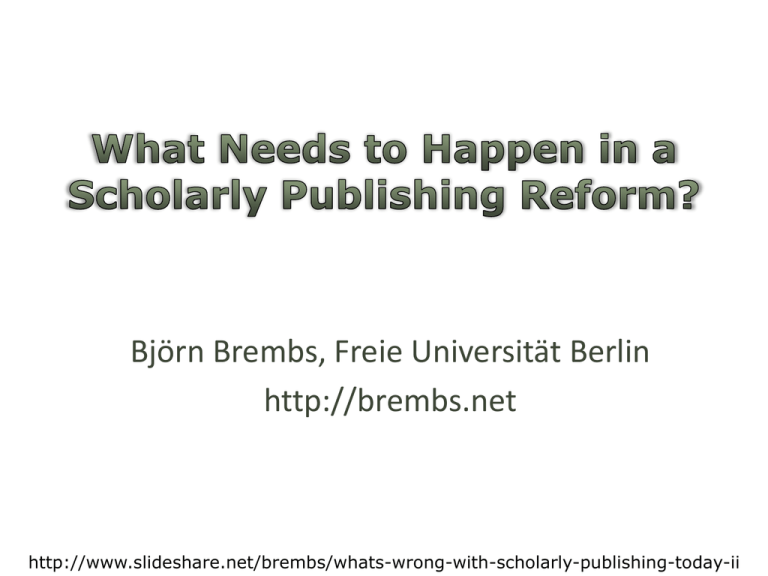
Björn Brembs, Freie Universität Berlin http://brembs.net http://www.slideshare.net/brembs/whats-wrong-with-scholarly-publishing-today-ii 1665: One journal: Philosophical Transactions of the Royal Society of London (Henry Oldenburg) 24,000 scholarly journals 1.5 million publications/year 3% annual growth 1 million authors 10-15 million readers at >10,000 institutions • 1.5 billion downloads/year • • • • • Source: Mabe MA (2009): Scholarly Publishing. European Review 17(1): 3-22 19th century publishing for a 21st century scientific community At least four different search tools to be sure not to miss any relevant literature? And that‘s not even counting the hours spent trying to screen the freshly published literature! How can I find anything? Identity Crisis • Machine-readable meaning • Technically non-trivial • Promising progress Tim Berners-Lee http://www.w3.org/2000/Talks/1206-xml2k-tbl/Overview.html When we finally find the reference, we have to ask friends with rich libraries to send the PDF to us? By the time we finally have the paper, we have run out of time to actually read it… We have to re-format our manuscripts every time an ex-scientist tells us to submit to another journal? We have to re-format our manuscripts every time an ex-scientist tells us to submit to another journal? Every homepage has had an access counter since 1993 but we don’t know how often our paper has been downloaded? Nothing happens when we click on the reference after "we performed the experiments as described previously"? Nothing happens when we click on the reference after "we performed the experiments as described previously"? First demonstration: 1968 Stanford Research Institute: NLS WWW: 1989 Tim Berners-Lee: CERN Who‘s to blame that our publishing system is so lame? We decide how and where to publish We are producers and consumers in personal union We chose to outsource scientific communication to publishers (includes Springer) Employees Sales Net income Growth 57,900 $13B $1B 7.6% 33,300 $10B $0.6B 9.4% 19,030 $5B $0.5B 125.7% Source: http://www.publishersweekly.com/binary-data/ARTICLE_ATTACHMENT/file/000/000/127-1.pdf % Change Modified from ARL: http://www.arl.org/bm~doc/arlstats06.pdf, http://www.arl.org/bm~doc/arlstat08.pdf KIT Library 10 Most expensive journal subscriptions 2010/11 Journal Biochimica et Biophysica Acta Chemical Physics Letters Journal of Organometallic Chemistry Journal of Radioanalytical and Nuclear Chemistry Nuclear Instruments & Methods in Physics Research / A Surface Science Inorganica Chimica Acta Journal of Mathematical Analysis and Applications Journal of Coordination Chemistry Journal of Magnetism and Magnetic Materials Total top ten: Price [€/a] Publisher 19,130.53 15,577.06 13,664.97 13,381.07 11,958.32 11,796.75 10,703.21 10,692.75 10,314.92 10,047.30 127,266.88 Elsevier Elsevier Elsevier Springer Elsevier Elsevier Elsevier Elsevier Taylor & Francis Elsevier http://www.bibliothek.kit.edu/cms/teuerste-zeitschriften.php Or filter failure? Information (Overload) Crisis 1.5 million publications per year in 24,000 journals Finding ‘my’ publications is impossible! Publish or Perish: number of publications 60-300 applicants per tenure-track position Reading enough publications is impossible! Source Normalized Impact per Paper • • • • Thomson Reuters: Impact Factor Eigenfactor (now Thomson Reuters) ScImago JournalRank (SJR) Scopus: SNIP, SJR Only read publications from high-ranking journals Publikationstätigkeit (vollständige Publikationsliste, darunter Originalarbeiten als Erstautor/in, Seniorautor/in, Impact-Punkte insgesamt und in den letzten 5 Jahren, darunter jeweils gesondert ausgewiesen als Erst- und Seniorautor/in, persönlicher Scientific Citations Index (SCI, h-Index nach Web of Science) über alle Arbeiten) Publications: Complete list of publications, including original research papers as first author, senior author, impact points total and in the last 5 years, with marked first and last-authorships, personal Scientific Citations Index (SCI, h-Index according to Web of Science) for all publications. Lies, damn lies and bibliometrics • Who knows what the IF is? • Who uses the IF to pick a journal (rate a candidate, etc.)? • Who knows how the IF is calculated and from what data? Introduced in 1960’s by Eugene Garfield: ISI citations 2010 articles 2008 and 2009 IF=5 Articles published in 08/09 were cited an average of 5 times in 10. Journal X IF 2010= All citations from TR indexed journals in 2010 to papers in journal X Number of citable articles published in journal X in 2008/9 €30,000-130,000/year subscription rates Covers ~11,500 journals (Scopus covers ~16,500) • Negotiable • Irreproducible • Mathematically unsound • PLoS Medicine, IF 2-11 (8.4) (The PLoS Medicine Editors (2006) The Impact Factor Game. PLoS Med 3(6): e291. http://www.plosmedicine.org/article/info:doi/10.1371%2Fjournal.pmed.0030291) • Current Biology IF from 7 to 11 in 2003 – Bought by Cell Press (Elsevier) in 2001… • Rockefeller University Press bought their data from Thomson Reuters • Up to 19% deviation from published records • Second dataset still not correct Rossner M, van Epps H, Hill E (2007): Show me the data. The Journal of Cell Biology, Vol. 179, No. 6, 1091-1092 http://jcb.rupress.org/cgi/content/full/179/6/1091 • Left-skewed distributions • Weak correlation of individual article citation rate with journal IF Seglen PO (1997): Why the impact factor of journals should not be used for evaluating research. BMJ 1997;314(7079):497 (15 February) http://www.bmj.com/cgi/content/full/314/7079/497 Fang FC, Casadevall A (2011): RETRACTED SCIENCE AND THE RETRACTION INDEX. Infect. Immun. doi:10.1128/IAI.05661-11 http://iai.asm.org/content/early/2011/08/08/IAI.05661-11.full.pdf+html?view=long&pmid=21825063 We only hire people who publish in journals with a lot of retractions! "Not everything that can be counted counts, and not everything that counts can be counted." Need to be developed and applied according to scientific standards 2009: 1,230 databases online in molecular and cell biology • No more publishers – libraries archive everything according to a world-wide standard • Single semantic, decentralized database of literature and data • Personalized filtering • Peer-review administrated by an independent body • Link typology for text/text, data/data and text/data links (“citations”) • Semantic Text/Datamining • All the metrics you (don’t) want (but need) • Tagging, bookmarking, etc. • Unique contributor IDs with attribution/reputation system (teaching, reviewing, curating, blogging, etc.) • IT assisted push/alert service • Technically feasible today (almost) How to get to my digital utopia? Libraries cut their subscriptions by the maximum contractually allowed amount Every year! Eventually, libraries should be able to invest the corporate profits of 2-4b €/$ per year 4b € per year for 10,000 university libraries: 400,000 € per year per library • Open Access funds for complaining faculty • Infrastructure and know-how (man-power) for a single, decentralized, federated scholarly publishing framework for literature and data.
